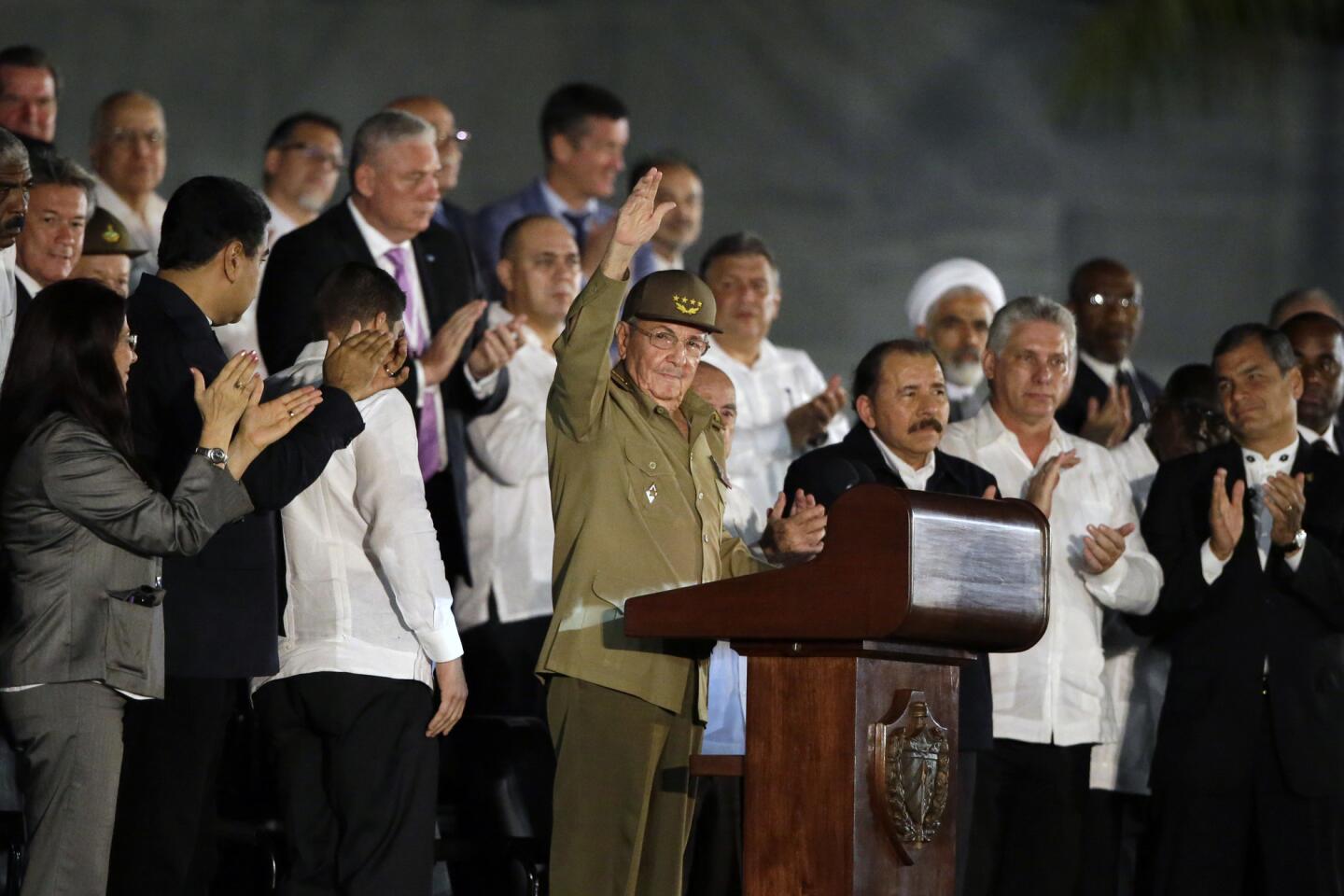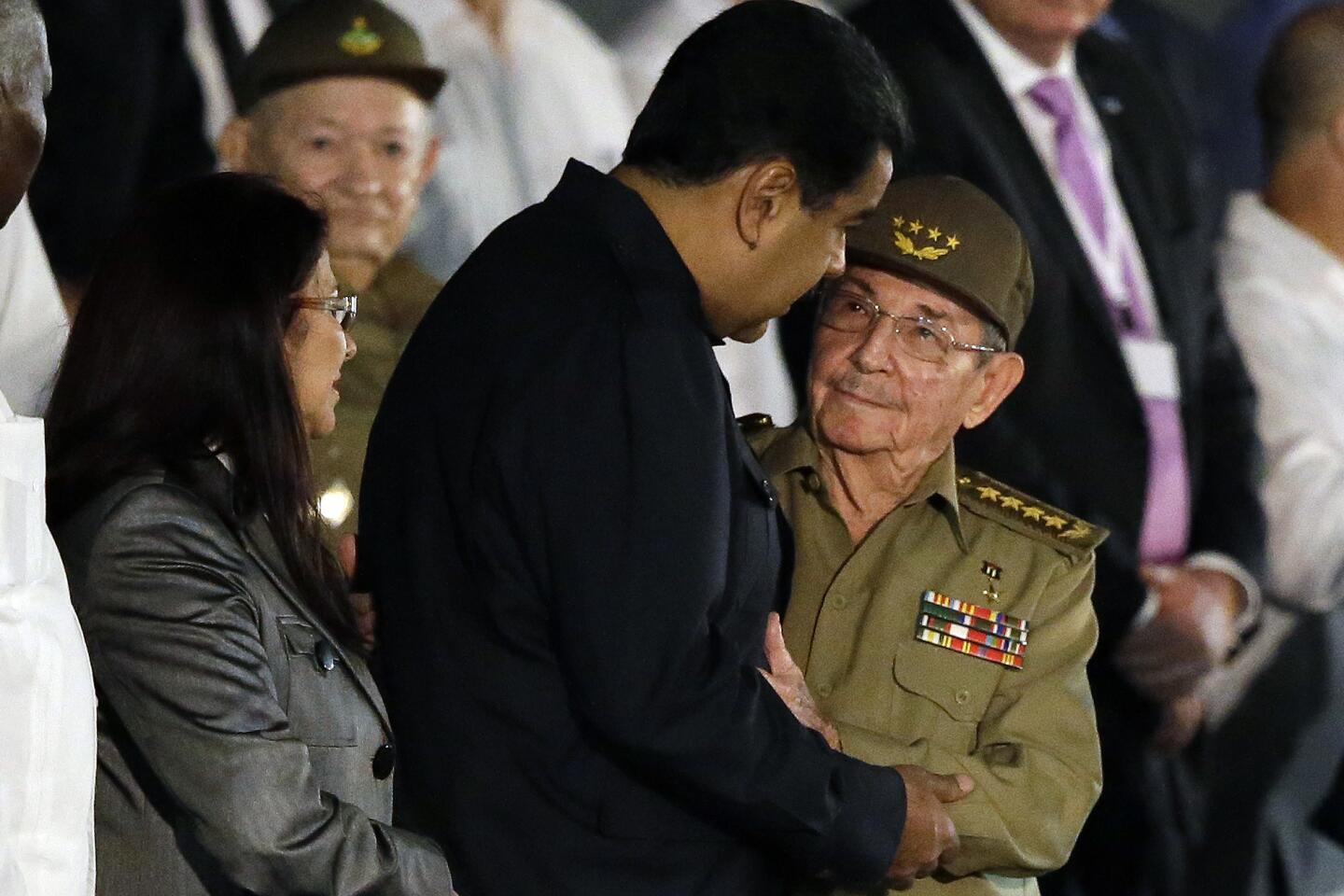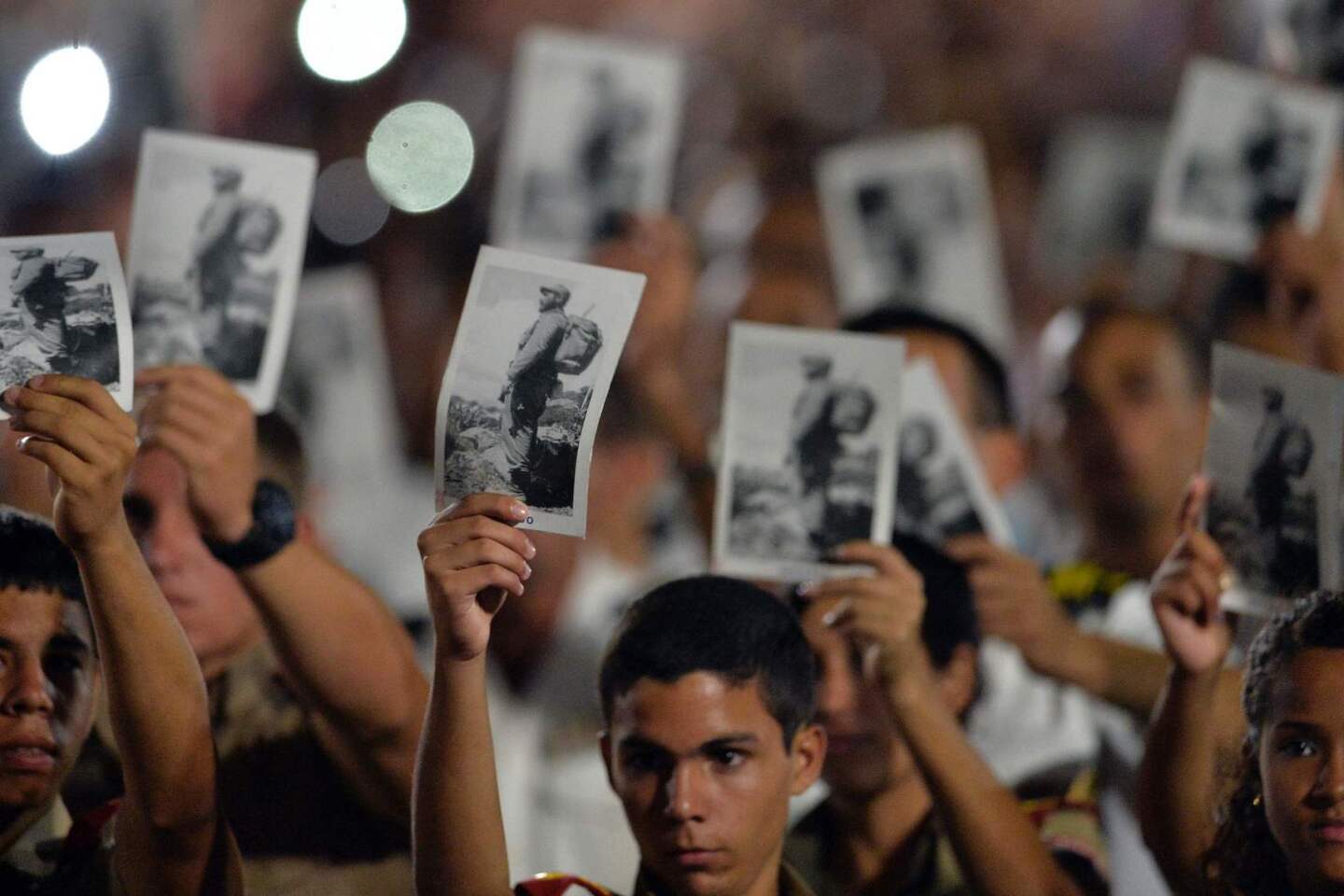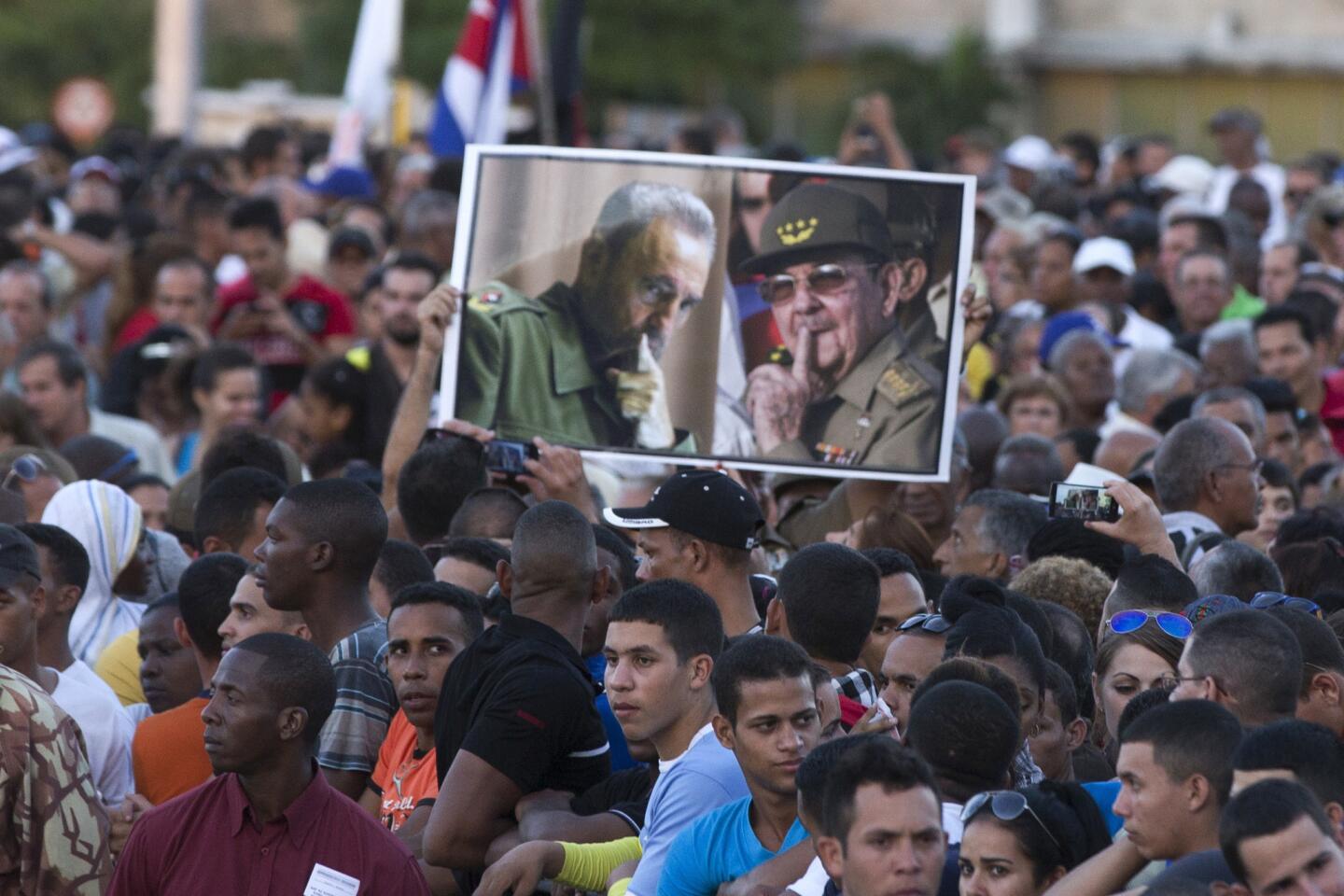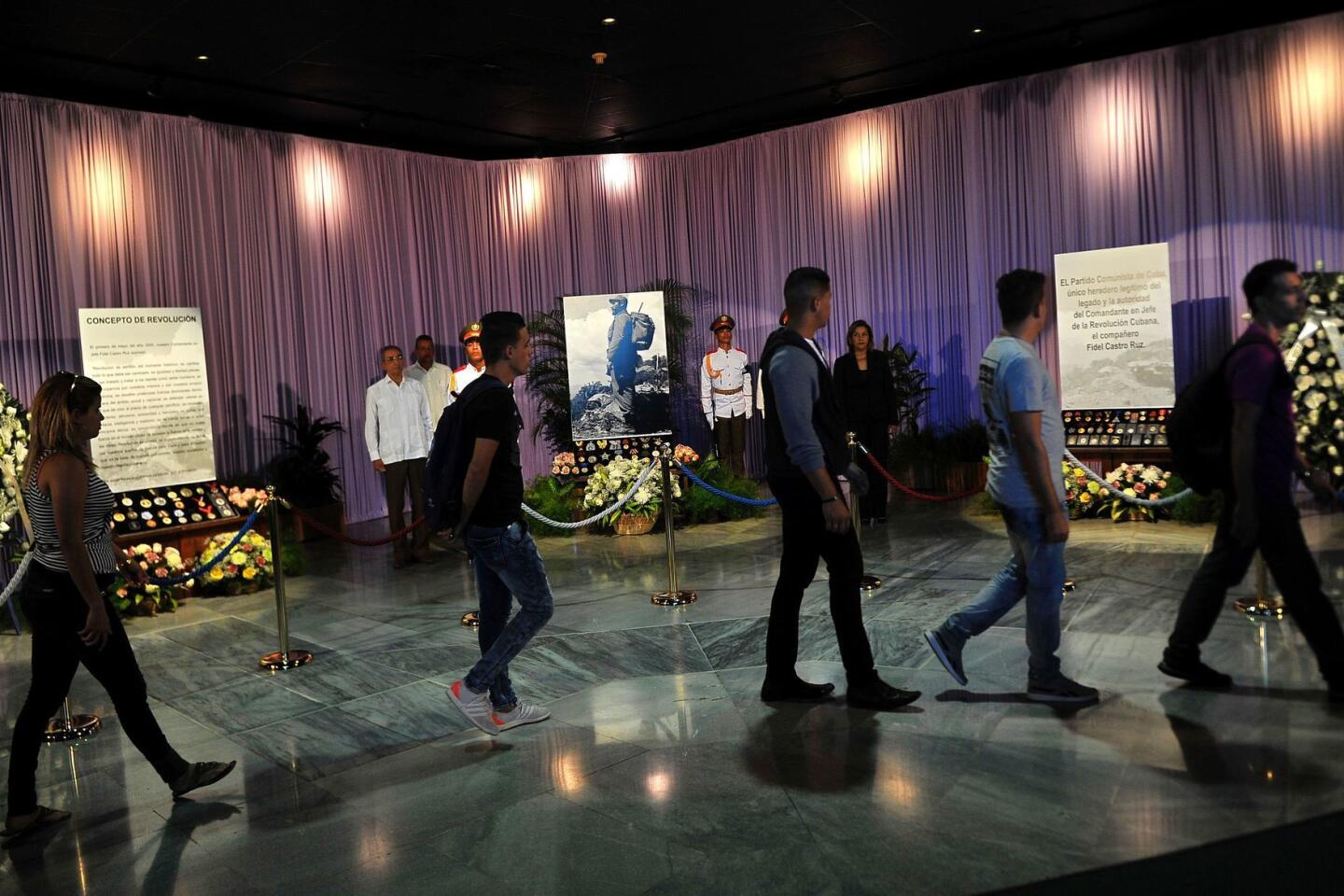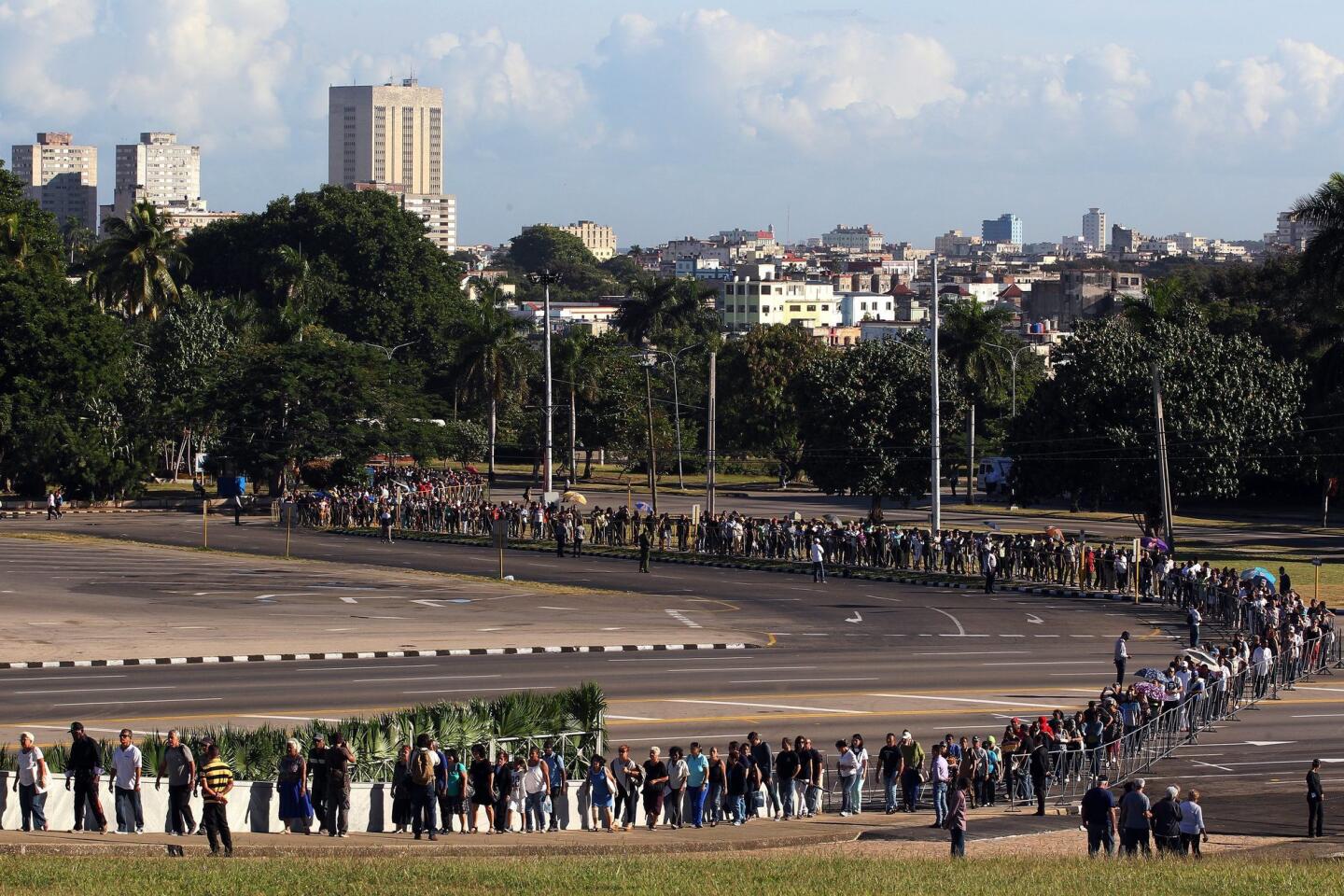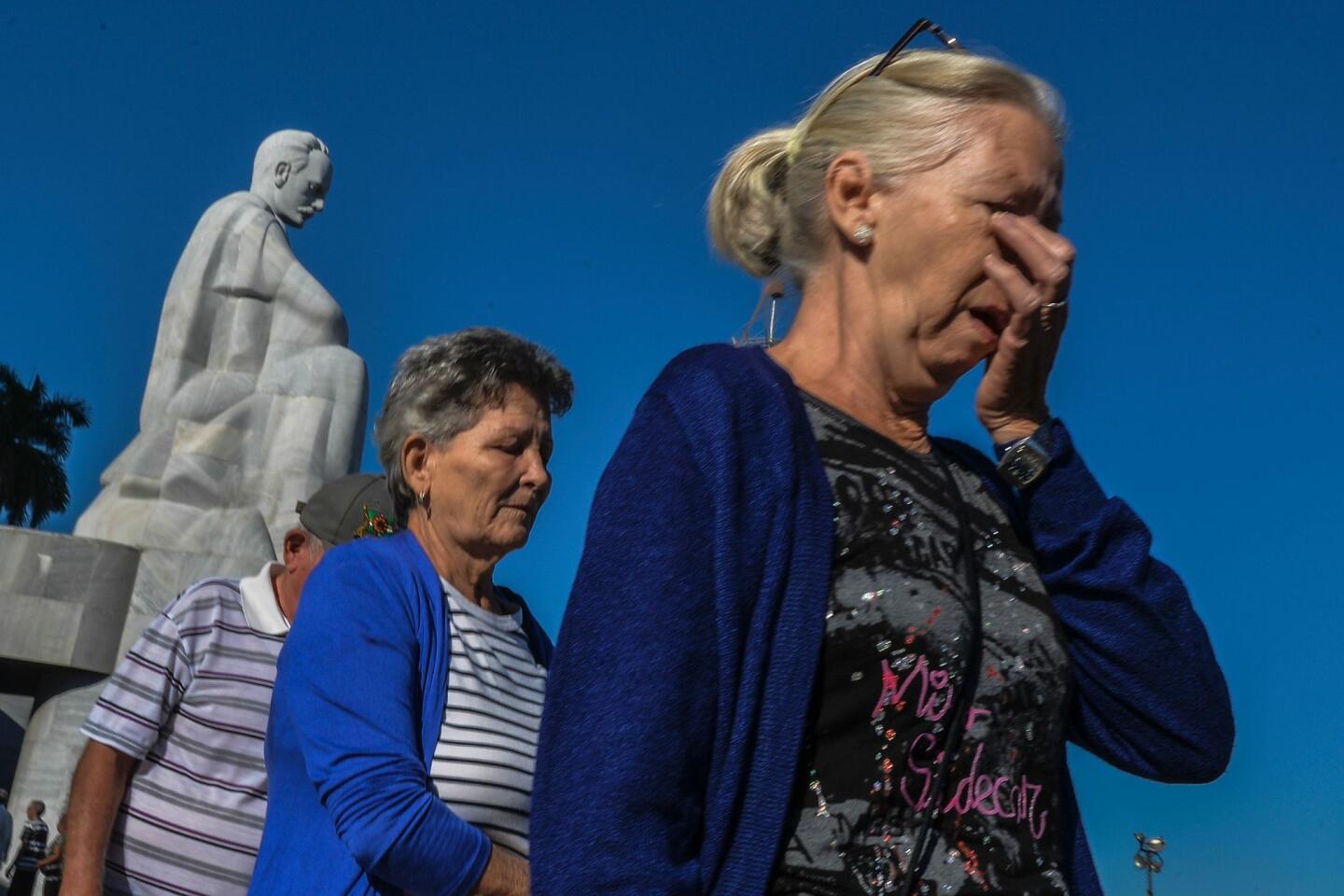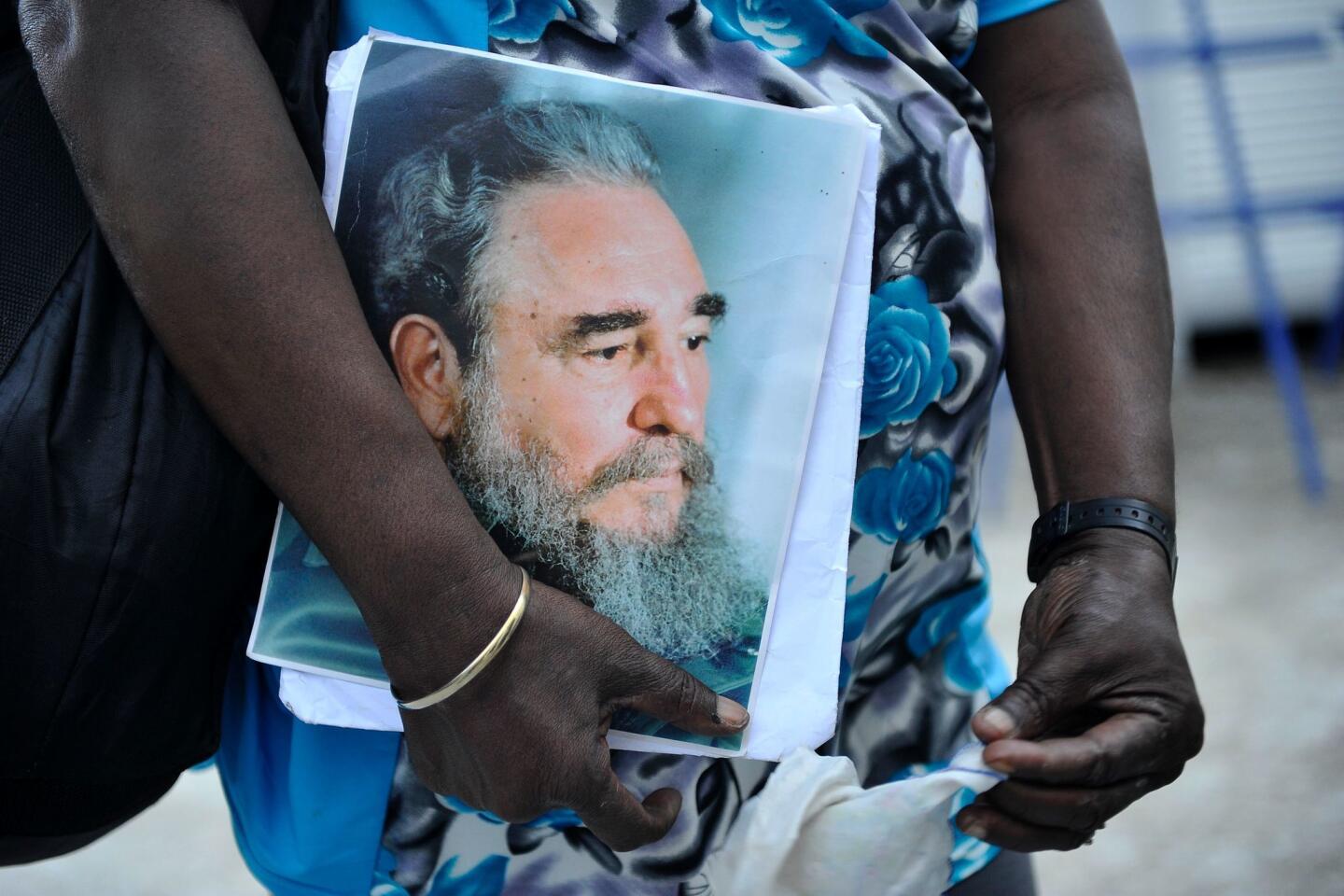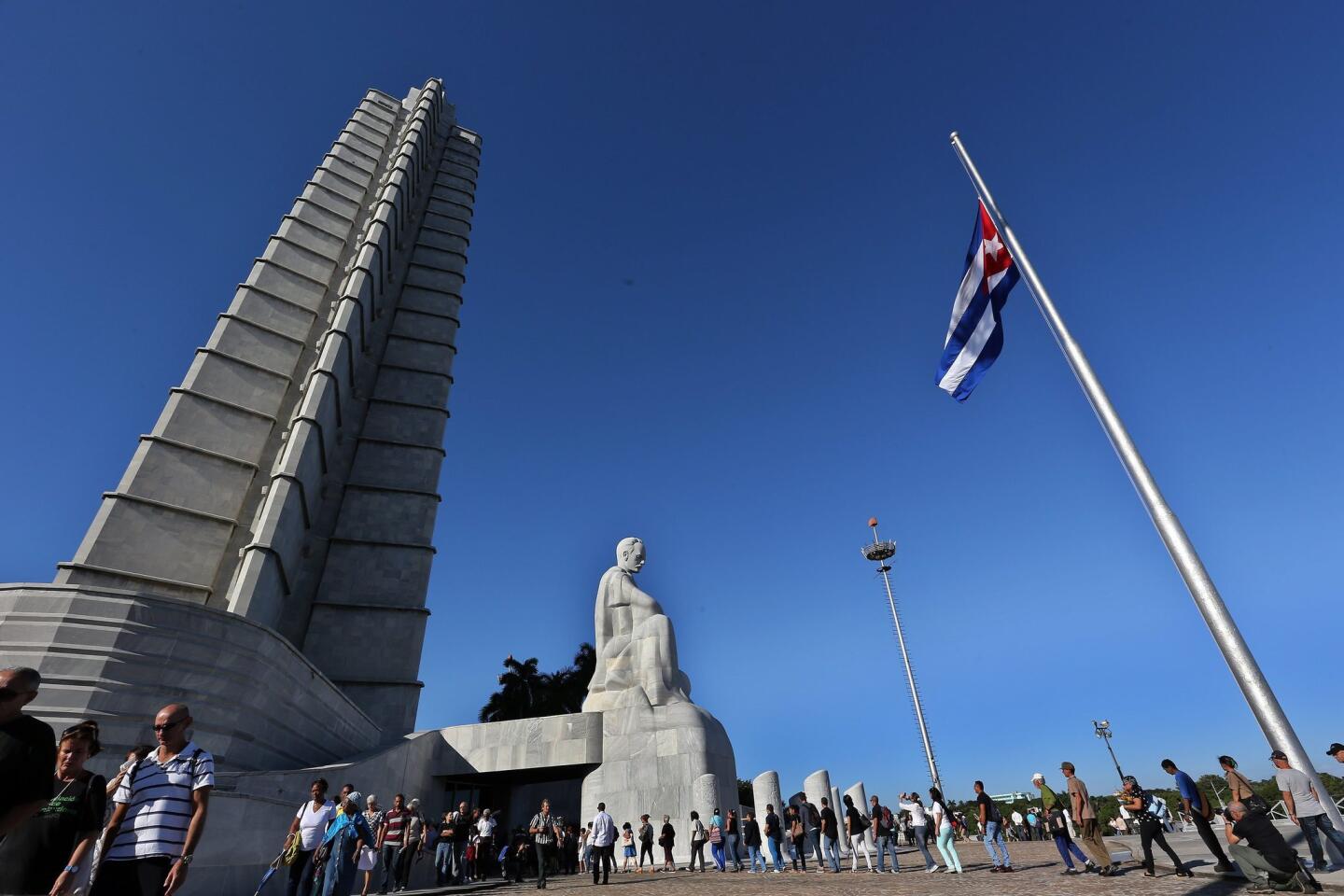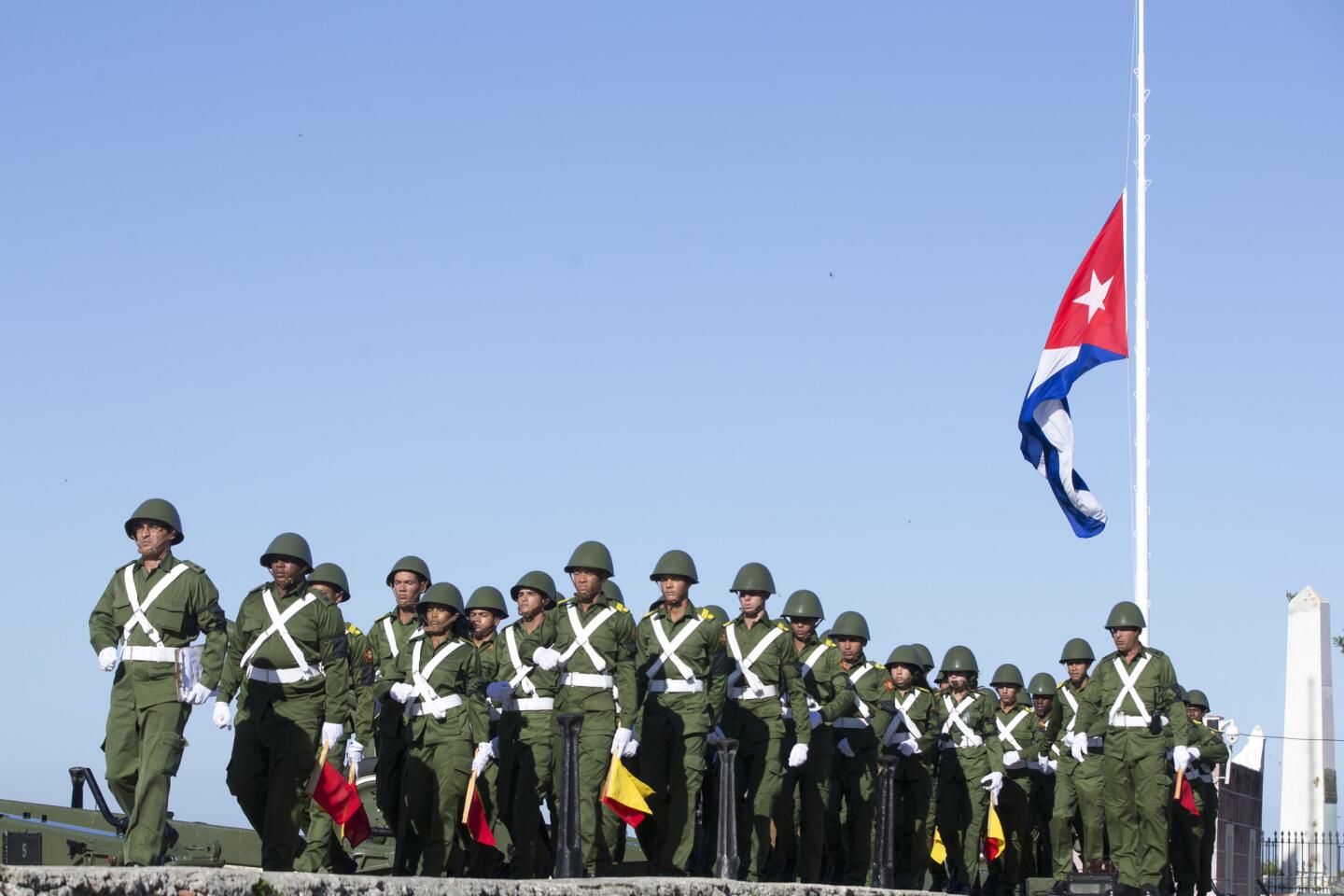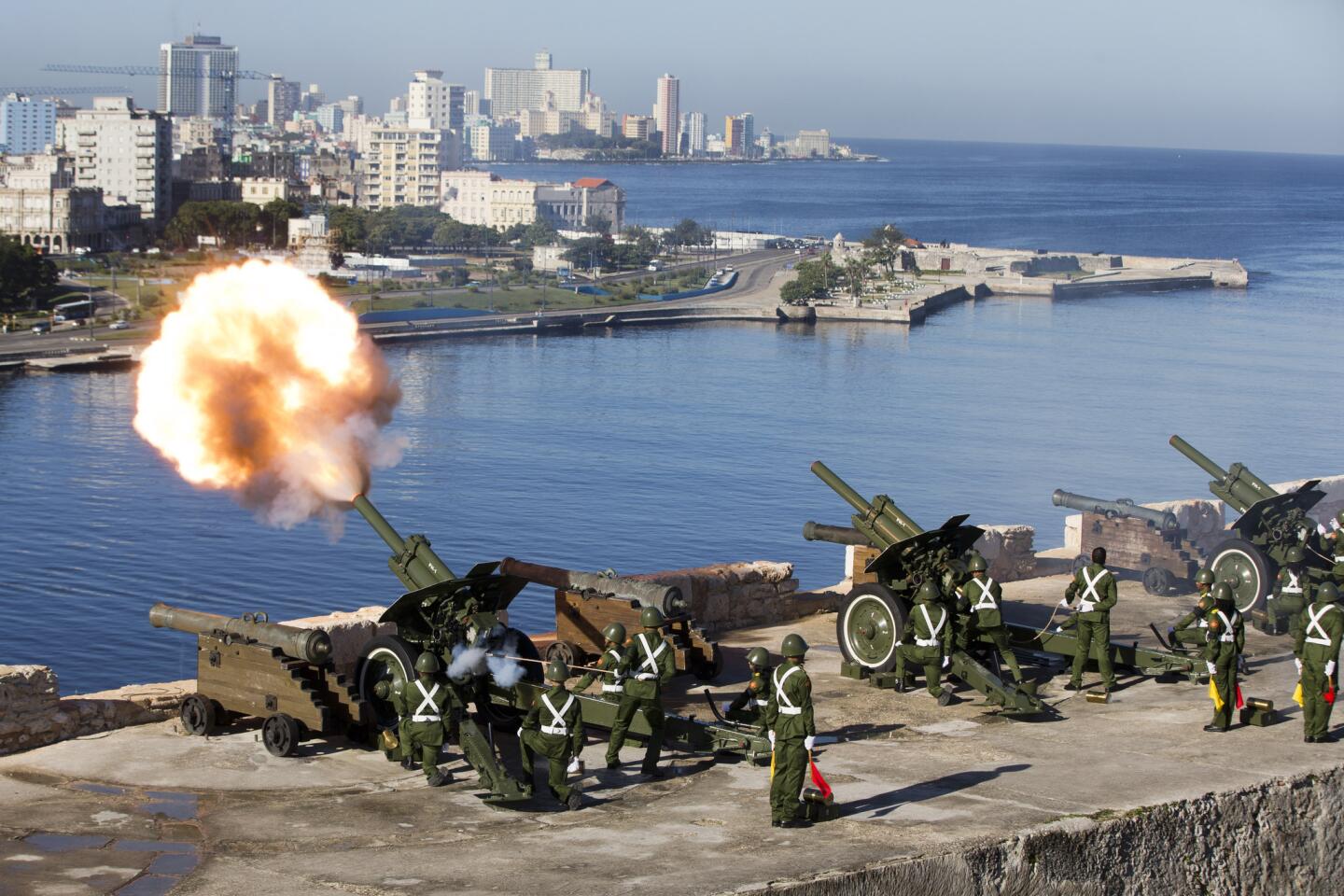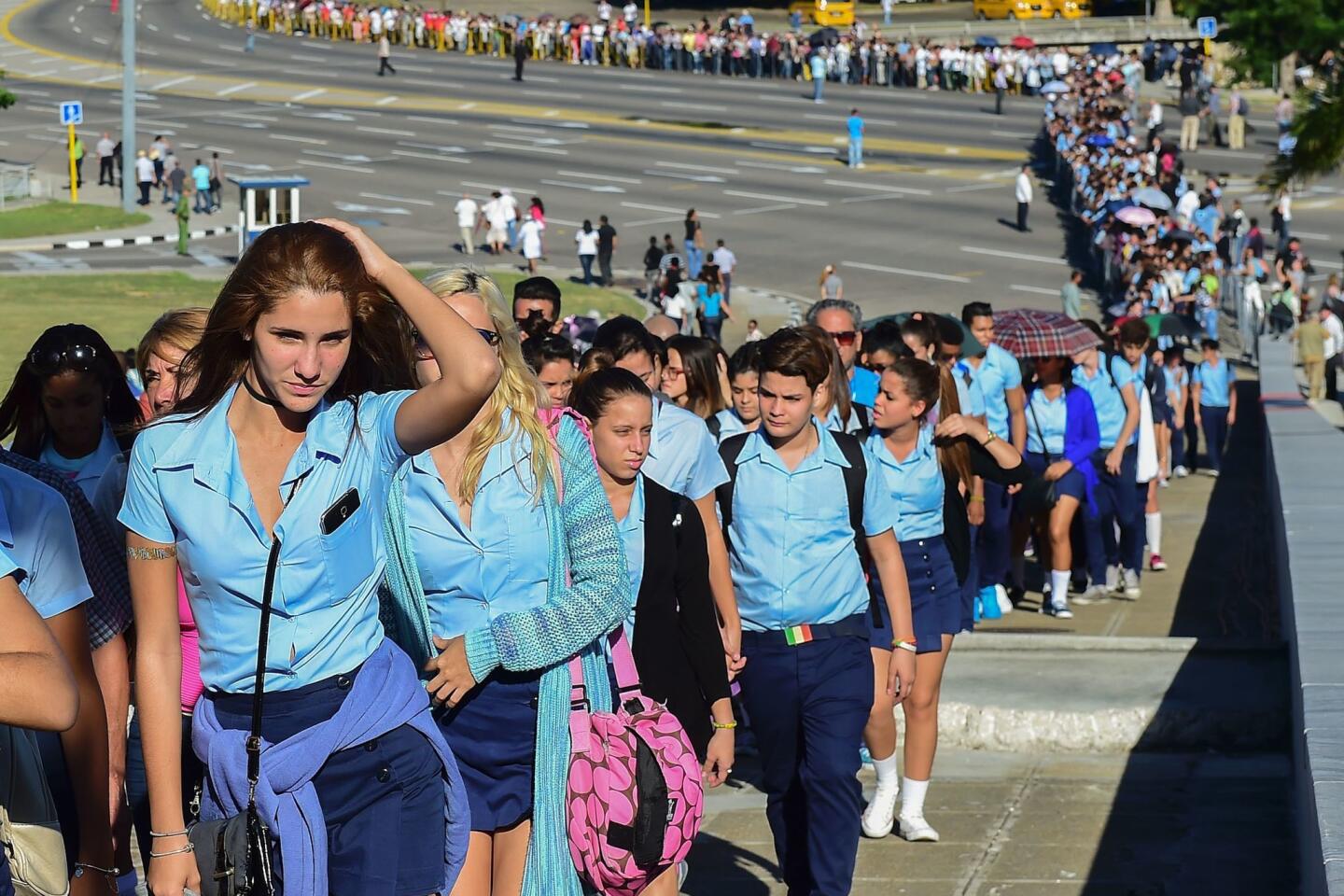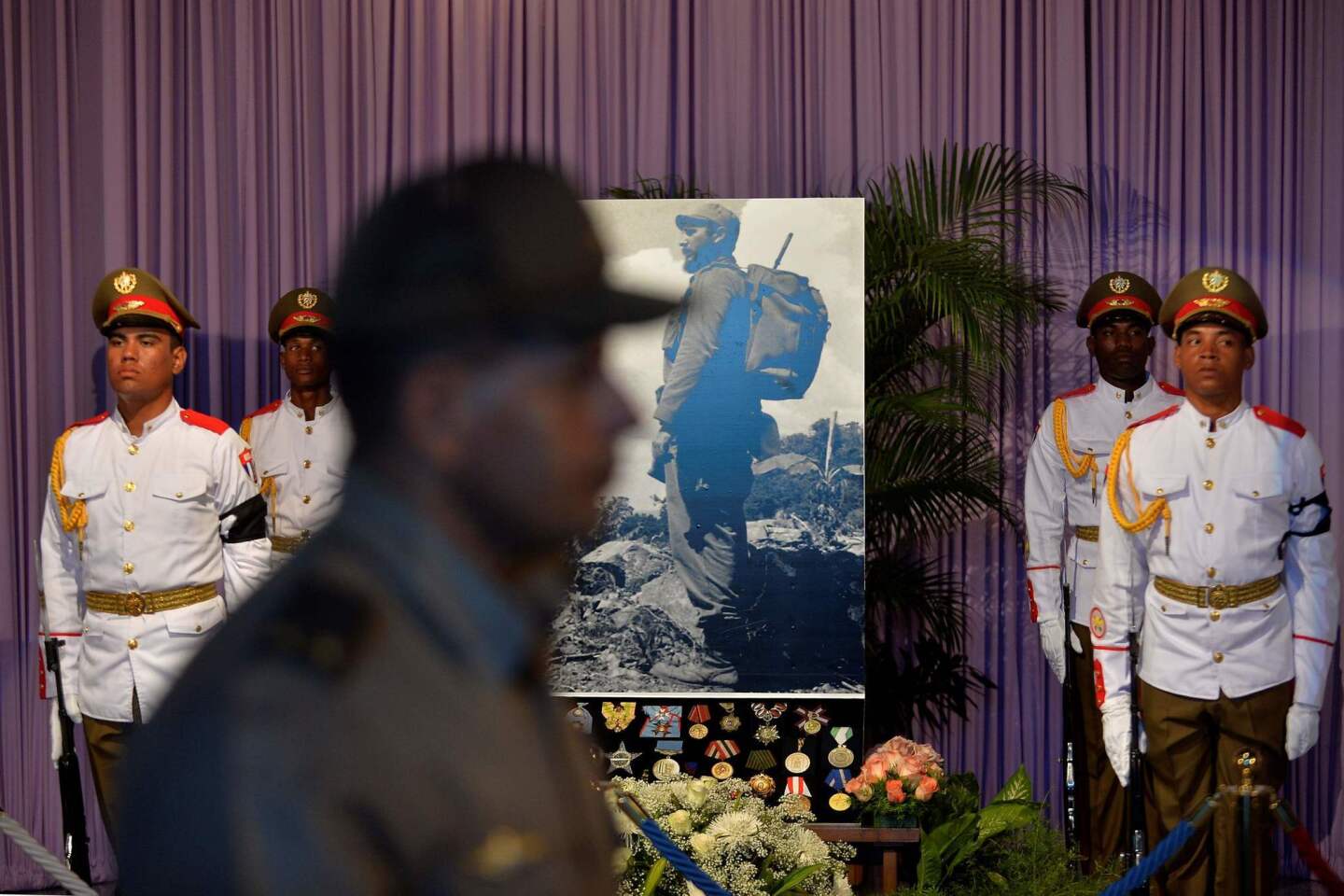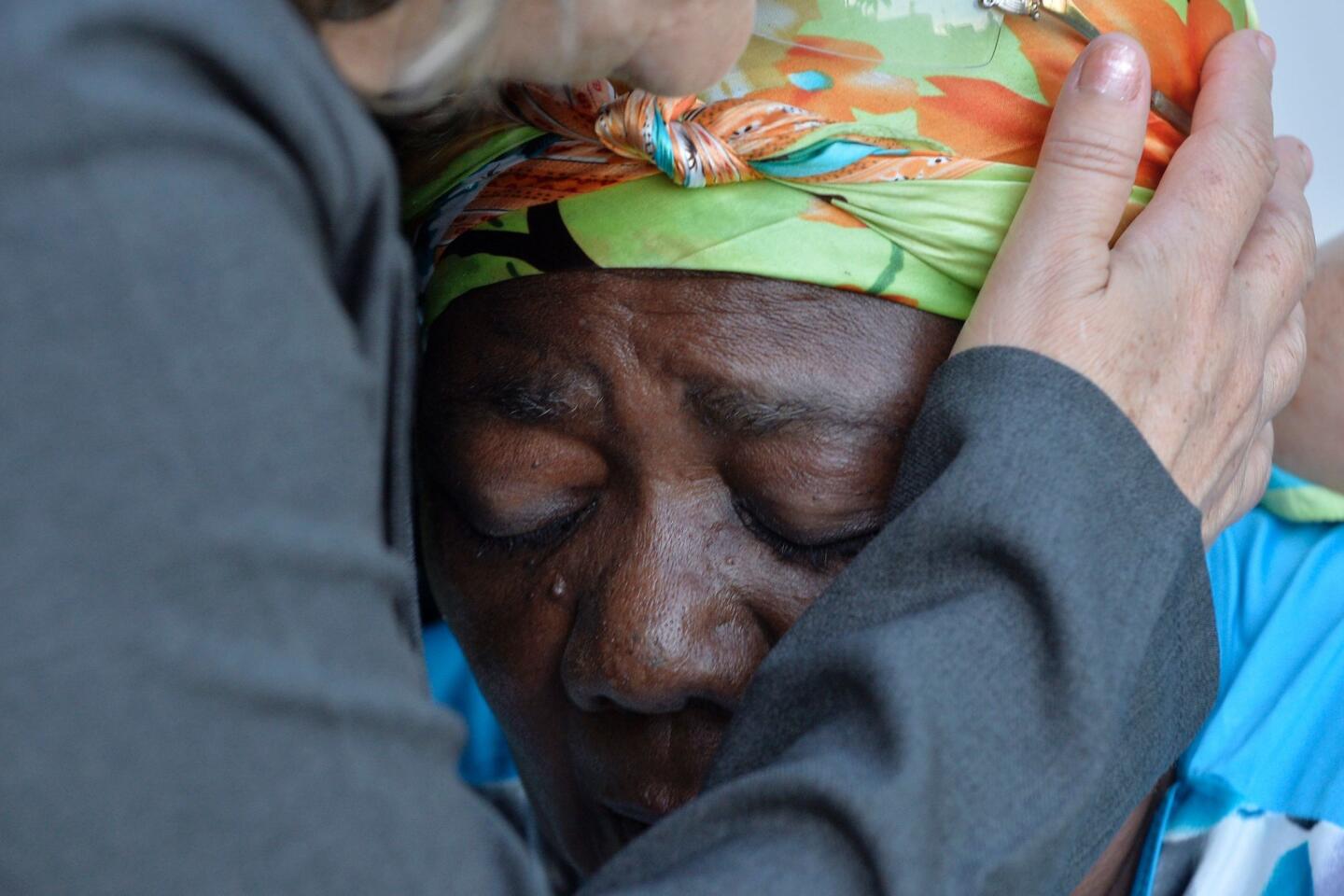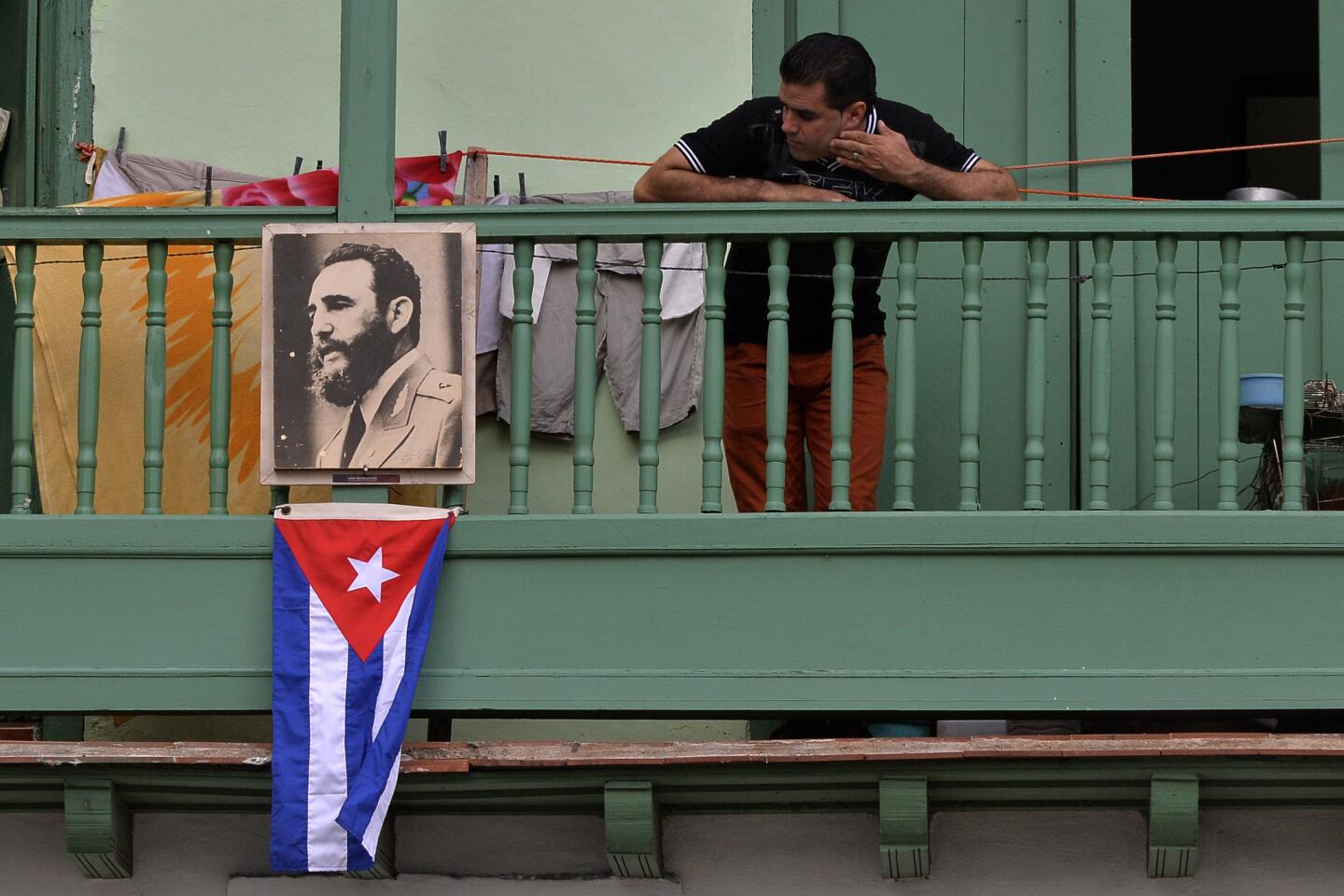Fidel Castro’s ashes interred in a private ceremony

Reporting from Santiago, Cuba — Fidel Castro’s ashes were being interred in a private ceremony Sunday morning after Cuban officials made a last-minute cancellation of plans to broadcast the events live on national and international television. International media were also barred from the ceremony.
The remains of the man who ruled Cuba for nearly half a century left the Plaza of the Revolution in the southern city of Santiago at 6:39 a.m., more than 20 minutes ahead of their scheduled departure. Thousands of people lined the two-mile route to Santa Ifigenia cemetery, waving Cuban flags and shouting “Long live Fidel!”
The funeral caravan entered the cemetery at 7:12 a.m. The Cuban military fired a 21-gun salute and crowds at the entrance to the ceremony sang the national anthem, then filled the road to the cemetery where the ashes were being interred inside, out of the public eye.
The decision to hold a private ceremony came the morning after Castro’s brother, President Raul Castro, announced that Cuba will prohibit the naming of streets and monuments after the former leader, and bar the construction of statues of the former leader and revolutionary icon, in keeping with his desire to avoid a cult of personality.
The events ended a week of national mourning for Fidel Castro that reached near-religious peaks of adulation.
“The leader of the revolution rejected any manifestation of a cult of personality and was consistent in that through the last hours of his life, insisting that, once dead, his name and likeness would never be used on institutions, streets, parks or other public sites, and that busts, statutes or other forms of tribute would never be erected,” Raul Castro told a massive crowd gathered in Santiago.
He said that Cuba’s National Assembly would vote in its next session on the law fulfilling the wishes of his brother, who died last week at 90. The legislature generally holds a meeting in December and under Cuba’s single-party system, parliament unanimously or near-unanimously approves every government proposal.
Fidel Castro, who stepped down in 2006 after falling ill, kept his name off public sites during his nearly half a century in power because he said he wanted to avoid the development of a personality cult. In contrast, the images of his fellow revolutionary fighters Camilo Cienfuegos and Ernesto “Che” Guevara became common across Cuba in the decades after their deaths.
Mourning for Castro has been fervent and intense across the country since his death, particularly in rural eastern Cuba, where huge crowds have been shouting Castro’s name and lining the roads to salute the funeral procession carrying his ashes.
“All of us would like to put Fidel’s name on everything but in the end, Fidel is all of Cuba,” said Juan Antonio Gonzalez, a 70-year-old retired economist. “It was a decision of Fidel’s, not Raul’s, and I think he has to be respected.”
ALSO
How Fidel Castro’s revolution remade South Florida
From milk to lightbulbs, Fidel Castro reshaped life in Cuba
Fidel Castro’s final tour across the homeland he ruled for nearly half a century
More to Read
Sign up for Essential California
The most important California stories and recommendations in your inbox every morning.
You may occasionally receive promotional content from the Los Angeles Times.
